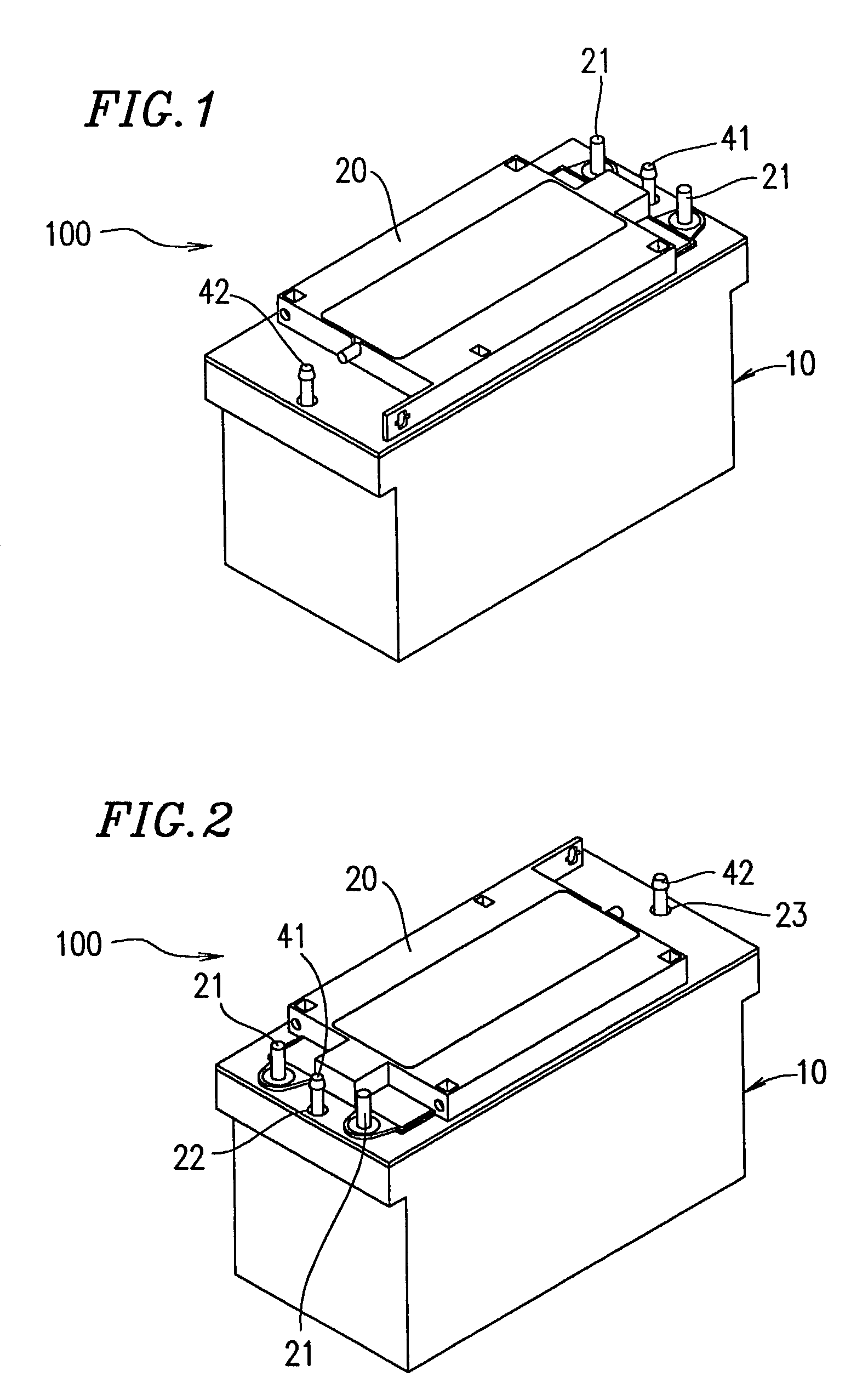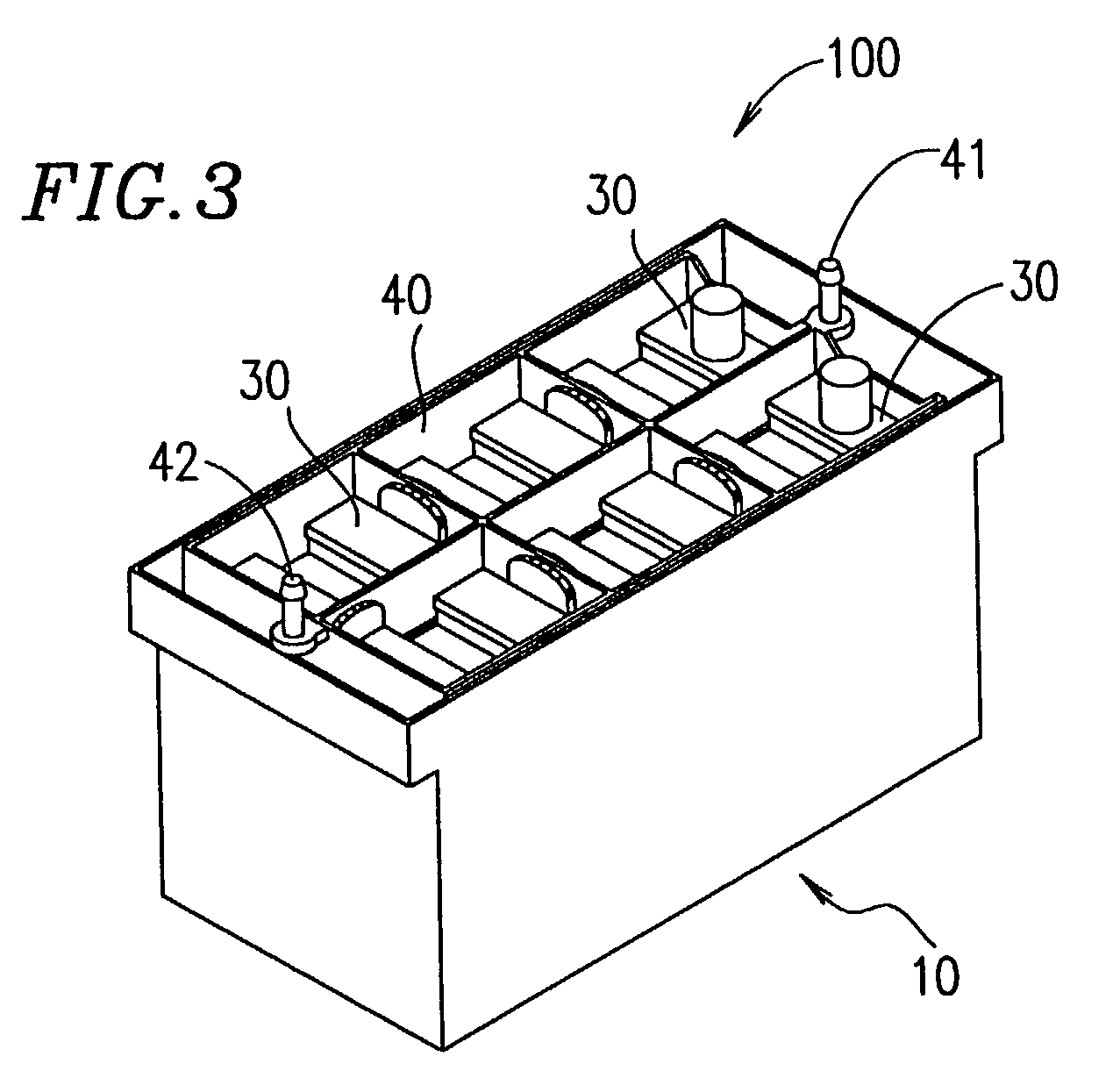Battery with proportional collectors, straps, and plates
- Summary
- Abstract
- Description
- Claims
- Application Information
AI Technical Summary
Benefits of technology
Problems solved by technology
Method used
Image
Examples
example 1
[0113]FIG. 1 is a perspective view showing a battery 100 according to Example 1 of the present invention, when viewed in a slanted direction from the front. FIG. 2 is a perspective view showing the battery 100, when viewed in a slanted direction from the rear. The battery 100 contains a plurality of cells. The cells are cooled with high cooling efficiency. The battery 100 comprises a cooling box 10 for cooling the cells and a lid 20 for sealing the cooling box 10. The cooling box 10 and the lid 20 are made of a synthetic resin.
[0114]FIG. 3 is a perspective view showing a battery 100 (note that the lid 20 is removed from the cooling box 10). In the cooling box 10, 6 cells 30, which are arranged in a matrix of 3 rows×2 columns and connected in series, are integrally contained in a frame-like battery case 40. The battery case 40 is made of a synthetic resin. The battery case 40 is provided with an inlet orifice 41 and an outlet orifice 42, through which cooling water, which is a coolan...
example 2
[0158]FIG. 36 is a perspective view showing a battery according to Example 2 of the present invention.
[0159]A battery 301 according to Example 2 of the present invention has a case body 302 in the shape of a hollow rectangular parallelepiped having an open top. The inner space of the case body 302 is divided with a partition 303 into first to sixth cells 302a to 302f. Specifically, the inner space of the case body 302 is divided into three portions in the longitudinal direction and into two portions in the width direction, forming the 6 cells 302a to 302f. The cells 302a to 302f each have a cross section in the shape of a rectangle elongated in the longitudinal direction of the case body 302.
[0160]The cells 302a to 302f each comprise a unit power generation element containing a plurality of positive electrode plates (e.g., PbO2 plates) having a similar planar shape and a plurality of negative electrode plates (e.g., Pb plates) having a similar planar shape. In the unit power generat...
PUM
 Login to View More
Login to View More Abstract
Description
Claims
Application Information
 Login to View More
Login to View More - R&D
- Intellectual Property
- Life Sciences
- Materials
- Tech Scout
- Unparalleled Data Quality
- Higher Quality Content
- 60% Fewer Hallucinations
Browse by: Latest US Patents, China's latest patents, Technical Efficacy Thesaurus, Application Domain, Technology Topic, Popular Technical Reports.
© 2025 PatSnap. All rights reserved.Legal|Privacy policy|Modern Slavery Act Transparency Statement|Sitemap|About US| Contact US: help@patsnap.com



